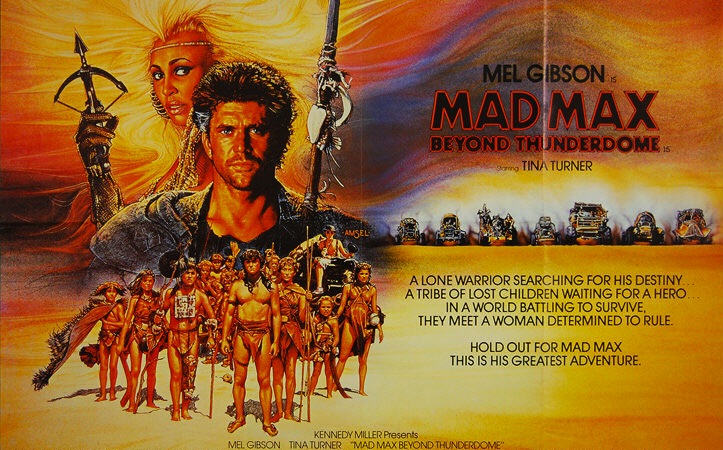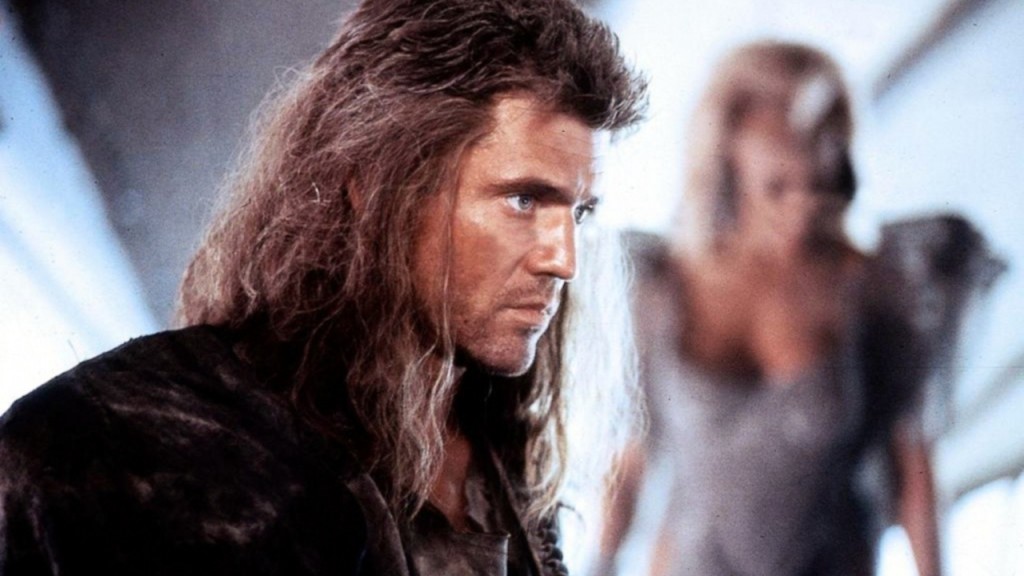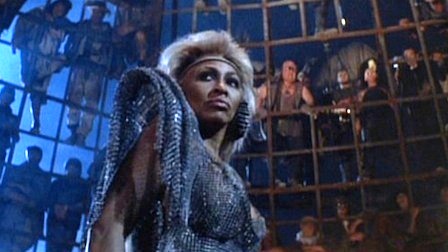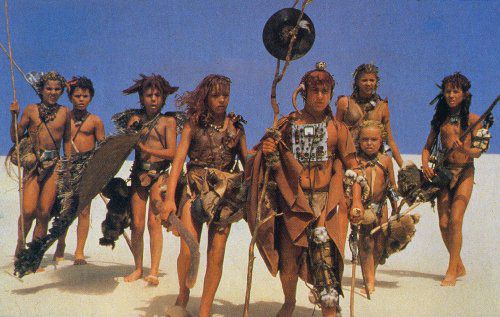Film is an entertainment medium that, by its very nature, tends to reward the viewer in rewatch. Sometimes movies even reveal to us how we’ve grown or changed since we last saw them. Our own Max Robinson reassesses old favorites, seasonal classics and the occasional oddball lost under the couch in his monthly column, Stale Popcorn.
Beyond Thunderdome seems to be considered the odd duck of the Mad Max franchise. I’ve heard it dismissed as being “so bad it’s good” or “a kids movie” and I frankly think those readings ignore some of the film’s below-the-surface ideas. Mad Max Beyond Thunderdome is the third act in the larger tale of Max Rockatansky, as much a fairy tale as the film’s previous installments were a revenge thriller and a samurai epic.
Mel Gibson’s stoic Max wanders the desert in a camel-drawn stagecoach rather than his iconic Pursuit Special. In case you were wondering if the Western imagery here is a coincidence, Max is cloaked in flowing rags and carrying a shotgun, an Ozzie cousin to Eastwood’s Man With No Name (a character that is explicitly referenced later on by another character). Gibson plays long-traveling Max with a weariness that suits his age.
In Mad Max, we watched the last quivering days of society before it finally collapsed. In The Road Warrior, we saw the reality that arose from that collapse. But, while the threat of the first two films is the absence of society, Beyond Thunderdome showcases the danger posed by civilization’s return. A sign boasting “Building A Better Tomorrow Together” marks Max’s entrance into Bartertown. Enough time has passed that basic survival is less of a daily consideration: Bartertown has vendors, tattoo parlors, and bars. It even has its own crude form of law and order: a value system centered on the sanctity of “The Deal.”
Bartertown’s ruler, Aunty Entity (Tina Turner), is an antagonist totally unlike the villains of previous Mad Max adventures. While amoral, Aunty is a far cry from the nitro-truck rape gang leaders and psychopath bikers Max has previously faced. Aunty, a woman of color who rose to a position of respect and authority she was denied as a “nobody” before the apocalypse, will do anything to protect Bartertown. Her rival for control of Bartertown, the diminutive mechanical genius Master (Angelo Rossitto), delights in humiliating Aunty before the town’s other denizens. When Aunty hires Max to kill Master’s symbiotic muscle, Blaster, it feels just as motivated by her injured pride than it is her need to maintain order. Aunty and Bartertown represent an attempt to return to the way things were, a seeming utopia that is in actuality built on a foundation of (pig) shit and oppression.
When Max, discovering Blaster possesses the mind of a child, refuses to execute him, Aunty exiles him to die in the desert (in a sequence that again deliberately evokes Eastwood’s nameless cowboy hero, this time with the desert exile in The Good, The Bad and The Ugly. Leone’s use of desert landscapes and minimal dialogue was clearly a big influence on Miller.) This is the start of the movie’s second act, and we’re introduced to Beyond Thunderdome‘s counterpoint to Bartertown, an oasis inhabited by a bizarre child cargo cult. A peaceful civilization made up of children who survived a 747 crash around the time of Australia’s collapse, they believe Max is the messiah-like “Captain Walker” who will finally fly them “home.” There’s a stereotypically “the children are our future” vibe to Beyond Thunderdome, but the naive, fragile hope of the child society is a terrific counterpoint to the dangerous cynicism of Aunty Entity and Bartertown. It’s also worth pointing out, and praising, how much incredible detail Miller and co-writer Terry Hayes have imbued their two societies with, from a religious ritual that makes use of the events leading to the 747’s crash to the incredibly specific rules and functions that go into the titual “Thunderdome.” The children and the Bartertown denizens even have their own unique speech patterns. (Compare the pithy slogans of Bartertown to Savannah Nix’s pining for the sanctuary of “morrowmorrowland”).
It’s unfortunate that Beyond Thunderdome‘s third act suffers from incoherence. It’s unclear why the children and Max decide to rescue Master and flee Bartertown, other than to offer an excuse for a big chase sequence. The chase itself, compared to the grim carnage of The Road Warrior‘s unquestionably similar climax, is decidedly lighthearted. Aunty’s raiders are fended off with frying pans, and nobody dies. We can argue about whether there are effective stakes in this sequence, but I think Miller chose to opt for slapstick here for a few reasons: (1) Nobody wants to watch a movie that ends with a bunch of precocious children getting murdered, and (2) it demonstrates how much the world of Mad Max has moved forward in intervening years. As ever, Max sacrifices himself to allow his new friends enough time to escape. (It feels fitting that peace and place are forever just out of reach for Max in these films.) That the children are able to begin again in Sydney and that Aunty chooses not to kill Max when he’s at her mercy, out of adversarial respect, implies something hereto unseen in these films and carried over into successor Fury Road: The promise of progress.






